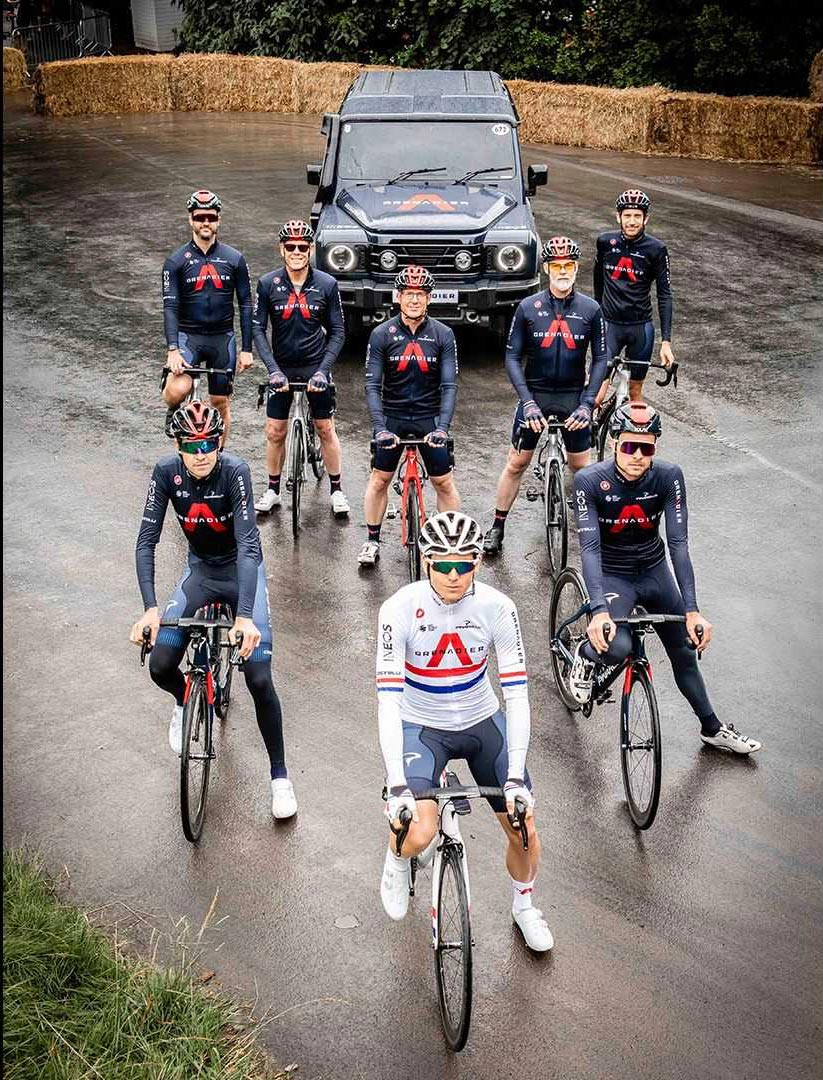Employer brand strategy – 5 tips for building one
- Share on LinkedIn
- Share on Twitter
- Copy link Copied to clipboard

Employer brand strategy – 5 tips for building one

Stand out with a powerful employer brand.
TL;DR
What is an employer brand?
Your tool for attracting and retaining the best talent.
Why you need a strong employer brand (now, more than ever).
Candidates can work for anyone, anywhere. Put purpose over perks and they’ll pick you.
Top 5 tips for building a strong employer brand.
Be authentic, lead with purpose and let your people shape it.
The employer brands of the future (and why they’ll win)
Put the effort in now and you’ll reap the rewards. See how others are changing the game.
What is an employer brand?
An employer brand brings together every aspect of your employee experience to give top talent a reason to want to work for you. It covers everything from your core purpose, values and culture to the benefits you offer and the way you support employees throughout their career.
It’s the most important story you will tell as a business. In practical terms, it’ll determine how you write job ads, manage your interview process and onboard new hires. See how our solution helps you tell this story.
Having a well-defined employer brand makes you credible and attractive to work for. Without it, you won’t meet growing candidate expectations and will risk becoming insignificant in the market. It should be authentic and reflect your reality, not your ambitions — so when you hire top talent, you have a much bigger chance of retaining them.
Companies that understand their employer brand and continue to invest in it have done really well in the market. Those that haven’t, or continue to ignore the demands of candidate-led recruitment, have really struggled.
Why you need a strong employer brand (now, more than ever)
A few years ago, businesses could afford to be complacent about their employer brand. If a candidate could find a job that offered an easy commute, decent salary and benefits, they’d be relatively happy (or comfortable sticking with it for the convenience). But we’ve just lived through a period of significant change. It’s undeniable that people view work very differently now.
The pressure on businesses to transform — particularly talent functions — has been astronomical. People aren’t flocking back to the office (unless forced to, which rarely ends well) and no amount of good PR, or even perks, will make people give up the flexibility and choice they’re now used to.
“Work-life balance is now the biggest motivator for changing jobs”
1. The generational shift
While Covid played its part in fast-tracking a movement, the way we work desperately needed to change. The concept of a 9-to-5 is archaic; it belongs in the industrial era where people worked out of fear and output was measured by physical hours spent on a production line.
Our parents’ generation moved from a life of working for necessity, to one where choice existed and people worked to build a better life for their families.
Today, we’re seeing an even bigger shift where ‘choice’ has become a given, not a luxury. People don’t have to put up with a job, working environment or culture that doesn’t work for them; it’s no longer frowned upon if you make a career move after less than a year. And the concept of ‘experience’ is measured by ability, not years spent ‘doing’.
Nobody is proving the power shift more than the younger generation who are switching jobs at a rate 134% higher than before the pandemic, according to LinkedIn.
Where generations before them may have got their heads down, pumped money into their pension and counted down the days to retirement, the younger members of today’s workforce have turned that approach on it’s head. They don’t want to ‘live for the weekend’ or just accept how things are; they want to do fulfilling work that works around them. Happiness at work is crucial — and if they’re not getting it from you, they’ll find it elsewhere.
Nielsen found that 54% of digital natives would like to start their own company, which sends a bold message: we’re ambitious, we want more control over our future and we don’t need to put up with environments that don’t suit us.
Considering this is the group of people who are trained in the latest skills and more likely to understand and predict future trends, it poses a significant risk if you can’t adapt and appeal to their needs and expectations.
2. The world has opened up
Geographical boundaries have been demolished. Remote working is no longer a luxury afforded to digital nomads working from beaches in Bali; it’s easily accessible to everyone. The world just got smaller and potential for career growth sky has rocketed.
There’s still a need for some employees to physically be in the same location but it’s limited to manufacturing industries and specific job roles. The reality for most is that this new era offers endless opportunities and a very achievable work-life balance that prioritises employee needs over bottom line.
And the data definitely validates that need. LinkedIn has seen a 54% increase in the number of members who’ve changed jobs, year-over-year since 2020 (previously this was between 0-5%). It sends a very clear message that expectations have risen and unhappy employees will walk if they don’t get what they need from a job or employer.
3. The rise of the Conscious Candidate
We’ve heard loud and clear that candidates want more than benefits, perks and a fun office environment. So why would they choose you over a competitor?
As a society, we are becoming more conscious of the impact we have on the world around us. With a rise in things like renewable energy, sustainable fashion, veganism and the amplified voices of marginalised groups, consumers are looking to make choices with a positive impact. And that ethical mindset is a key factor in choosing a new employer, too.
This is where your employer brand really comes into play. It’s a key opportunity to showcase the work you do to better the planet and reduce any negative impact your business operations may have. Even more crucially than that, it’s a chance to show that you genuinely treat employees well.
Is your DEI policy worth the paper it’s written on? Are you truly supporting people with protected characteristics to thrive? Does your board fairly represent the people across your business? With the rise of LinkedIn and job review sites, there’s nowhere to hide; acting with integrity and backing up big claims with cold hard facts will make you a much more appealing option in a world of endless choice.
Candidates want to believe you act ethically, employees want to play a part in making it happen, and investors want to see the impact of it.
If you can strike a balance between ethical practices and sustainable growth, all while nurturing a flexible and positive work environment, you’ll have a team of invaluable brand ambassadors who are more likely to share positive stories on social media and commit to you for the long term.
Top 5 tips for building a strong employer brand
Employer branding and employee value propositions are the foundation that great hiring and retention is built on. Once you acknowledge the power has been firmly placed in the candidate’s hands, you can build an appealing proposition centred around what they want and give your organisation the competitive edge.
1. Make it authentic
First impressions really do count. If you talk about efficiency and lean practices in your job ads then make a candidate jump through 15 hoops before submitting an application on your careers website, something won’t sit right. Your employer brand needs to be a true reflection of what it’s like to work for you, so be truthful about your gaps as a business. That way, you’ll hire people who are capable of, and willing to, plug them.
Talking about the work you do
People buy from people, right? The same applies to hiring. Candidates don’t want to visit a stiff, corporate careers website to hear stories from your CEO. They want to know what it’s really like to work for you — and they want to hear it from employees working for you who they can relate to.
Put your people front and centre to make a real impact, and show potential candidates that you value the work everyone contributes.
Industry accreditations
You might think earning (or paying for) industry accreditation will put you ahead of your competitors, but this is an area to be cautious about.
Firstly, consider if paying for industry accreditation that makes you look good is really worth the spend. Do you need to validate that you’re a good business to work for, or are you better off investing in building the thing you’re passionate about and let your employees do the talking?
There have been some pretty high-profile cases recently where employees have spoken out on social media about ethically ‘accredited’ big brands who talk the talk but haven’t mastered walking the walk yet. If you’re not squeaky clean, it’s best to avoid putting out holier-than-thou stories about the impact you make. It sends a very clear message that you prioritise PR over action, and candidates will see through it.
2. Be consistent
Define what you stand for, very clearly, and tell a consistent story across every channel: your website, social media, job ads. People don’t focus their job search solely on what they see in your ads. They are more likely to see your ad then check out your website, scroll through your social media profiles and decide if you can offer the positive working environment, work life balance and company culture that makes a career move worthwhile. If the story isn’t consistent, that’s a big red flag.
As well as attracting top talent, telling a consistent story just makes good business sense. A study by LinkedIn and brand strategy consultancy, Lippincott, showed that businesses with aligned consumer and talent brands can achieve an 87% increase in their application rates and 3x higher conversion-to-hire rates.
On the flip side, companies can expect to pay new starters a minimum of 10% more to compensate for a poor reputation. If a candidate takes a risk in switching jobs, they expect to be rewarded for it.
3. Research what candidates actually want
You wouldn’t start product development without researching the market and knowing the investment will pay off, so why is recruitment any different?
Knowing how to appeal to top talent is arguably more important than knowing how to design the latest product or service. If you can’t hire the right people with the skills you need, you’ll struggle to innovate anyway.
If you want to know how to appeal to future talent, build your employer brand on the right foundations:
- Spend time understanding your existing employees. Why did they choose you over a competitor? What do they like/dislike about working for you? This insight is gold dust.
- Keep an eye on the market. Who’s hiring rapidly, and why are people choosing to work for them? What types of jobs are people searching for? How have things like the 4-day work week trials impacted the job market?
- Commit to making the changes needed. If you’re watching the market closely, you’ll start to see trends emerging. Capitalise on them by innovating and adapting regularly. The more agile you can be in responding to trends, the more effective and sustainable your hiring strategy will be.
4. Lead with purpose
It’s very easy to tell a story about doing good in the world, but you have to actually do good if you want people to believe that’s what your business really stands for.
If you say you stand for equality and change the colour of your logo to match big events throughout the year, you need to put your money where your mouth is. Has your talent acquisition strategy been developed to support hiring marginalised groups? Do you have the policies in place to support and protect them? if the answer is no, all you’ve really done is engaged in some (questionable) PR.
Some big name brands have received huge backlash on social media for speaking out about important matters without backing it up with any real action, so focus on doing good before shouting from the rooftops about how worthy you are.
It also makes more sense to stand for something related to the business you’re in. For example: telecoms providers supporting developing countries in getting connected; energy companies working towards net zero carbon emissions; food producers working to reduce waste and combat poverty. Taking action in an area you’re familiar with will be easier, as well as providing a really powerful story to share.
5. Avoid a top-down approach
Nothing quite says ‘corporate culture’ like an employer brand that’s been developed by the people who are furthest away from the day-to-day operations of your business. Your employer brand should be authentic, real and all about people. Give your employees the chance to engage in the development of it, tell their stories on your careers website, and empower them to support with onboarding new team members.
Culture grows from the bottom up. If you want to attract candidates with a compelling story about who you are, shift the power to the people who are more capable of telling it.
The employer brands of the future (and why they’ll win)
Employer branding isn’t a dark art. Successful hiring and retention relies on companies understanding exactly what candidates want and building a powerful, purposeful brand around that.
With the right investment and consistent effort to stay relevant, you will attract the right candidates. The winners, quite simply, are the ones willing to put in the work.
So, how do organisations get ahead?
- Tell a realistic story to avoid biting yourself in the a*se later down the line.
- We’ve said it before and we’ll say it again: perks do not cut it anymore. Company culture relies on a shared passion for the thing you do, and purpose sits at the heart of that. Give candidates a reason to care about what you do.
- If you start trying to communicate different messages to different audiences, your purpose and story will be diluted and feel disingenuous.
Companies smashing their employer brand
We’ve helped some amazing companies scale teams in industries that are innovating quicker than we’ve ever seen before, so we’ve learnt some really important lessons in how a strong, authentic employer brand can help you meet ambitious goals.
Here are a few of our favourites.

INEOS Automotive
Assembling the A Team
Global chemical company INEOS is an amazing example of how a brand can pivot with purpose.
After the Land Rover Defender ceased production, INEOS’ Chairman, Jim Ratcliffe, saw a gap in the market for an uncompromising off-roader. And so the Grenadier was born.
The ambitious project is an incredible example of how to modernise and transform your employer brand to suit a brand new audience and market.
We can’t take the credit for their employer brand, but we love it anyway.

Bitstamp
Cryptocurrency, the 8th wonder of the world
The original cryptocurrency exchange Bitstamp exists to “make a new world of finance accessible and beneficial for all through crypto.”
We helped develop their employer brand, centred around the concept of crypto as the ‘8th wonder of the world’. A powerful articulation of the way crypto is changing the way we view currency, and the role Bitstamp have played in making it available to everyday people.
Their reputation for ethical management (of people and currency), trustworthiness and resilience are the three things that make them both a world leader in crypto exchange and a sought-after place to work.

Origen
The atmosphere, restored
Experts in engineering and clean tech Origen have a bold and ambitious purpose: to reverse climate change and get the world to see that there is no Planet B.
“No more excuses. No more blue sky thinking. It’s time for blue sky doing.”
If you’re going to change the world, you need to invest in the best people for the job. We harnessed their powerful purpose to build an entire careers website from scratch in a week and helped them scale a 20-strong team.


